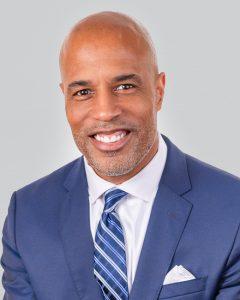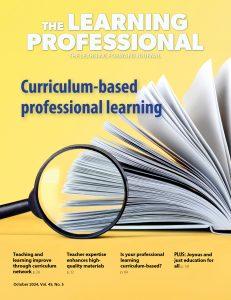I recently attended a School Leadership Preparation and Development Network Conference in Chicago, Illinois. During the preconference, Paul Manna talked about his recently released Wallace Foundation-commissioned study, Developing Excellent School Principals to Advance Teaching and Learning: Considerations for State Policy (Manna, 2015).
Manna’s report addresses several questions, including: What can policymakers do to help ensure that schools have excellent principals and advance teaching and learning for their students?
In his talk, Manna emphasized the important role principals play. “Principals, through their actions, can be powerful multipliers of effective teaching and leadership practices in their schools,” he told the group. In our work at Learning Forward, we often describe the principal as the leader of learning in the school — for educators and students.
The seminal study, How Leadership Influences Student Learning, goes so far as to say that effectiveness of the principal is the No. 2 school-related factor that contributes to how well students do (Leithwood, Louis, Anderson, & Wahlstrom, 2004).
Manna sums it up in his report by saying, “Although nobody would deny that school principals are important, the principal’s role has received consistently less attention relative to other topics on state education policy agendas. State policymakers give much more attention to teachers and teacher-related issues than principals. Further, the impulse to broaden the scope of ‘school leadership,’ although done for understandable reasons, has had the unintended consequence of obscuring the unique and specific roles that principals play” (Manna, 2015, pp. 7-8).
Manna’s report highlights several levers on which policymakers might focus to strengthen the principalship:
- Set principal leadership standards: Standards clarify what it is that principals should know and be able to do.
- Recruit aspiring principals into the profession: States may offer incentives that drive more effective principals to where they are needed most.
- Approve and oversee principal preparation programs: Because of their role in approving programs, states can ensure quality preparation of principals.
- License new and veteran principals: States have the “gatekeeping authority” to determine who gets to become and remain a principal. It’s important to recognize this ability and effectively use it.
- Support principal growth within professional development: As Learning Forward has noted, lack of attention to effective and ongoing professional learning often is where states fall short. This is just as important for principals as it is for teachers.
- Evaluate principals: The report highlights the fact that, although 36 states have developed principal evaluation standards, no best practices have emerged (Manna, 2015, pp. 8-10).
Although this report was written with a focus on state policy, I would invite our provincial leaders in Canada to give it a look as well. Much of what Paul Manna has to say aligns in many ways with the Canadian Association of Principals report on the future of the principalship.
I would also suggest that local district leaders reflect on Manna’s findings, particularly his comments on how states and districts need to create systems and incentives to drive principals to engage in instructional leadership activities that are known to improve teaching and learning.
Finally, I would encourage principals to read this report. I believe it will provide school leaders with many talking points to help them advocate for more supportive conditions to accomplish their critically important work.
References
Leithwood, K., Louis, K., Anderson, S., & Wahlstrom, K. (2004). How leadership influences student learning. Minneapolis, MN: Center for Applied Research and Educational Improvement.
Manna, P. (2015). Developing excellent school principals to advance teaching and learning: Considerations for state policy. New York, NY: The Wallace Foundation.






